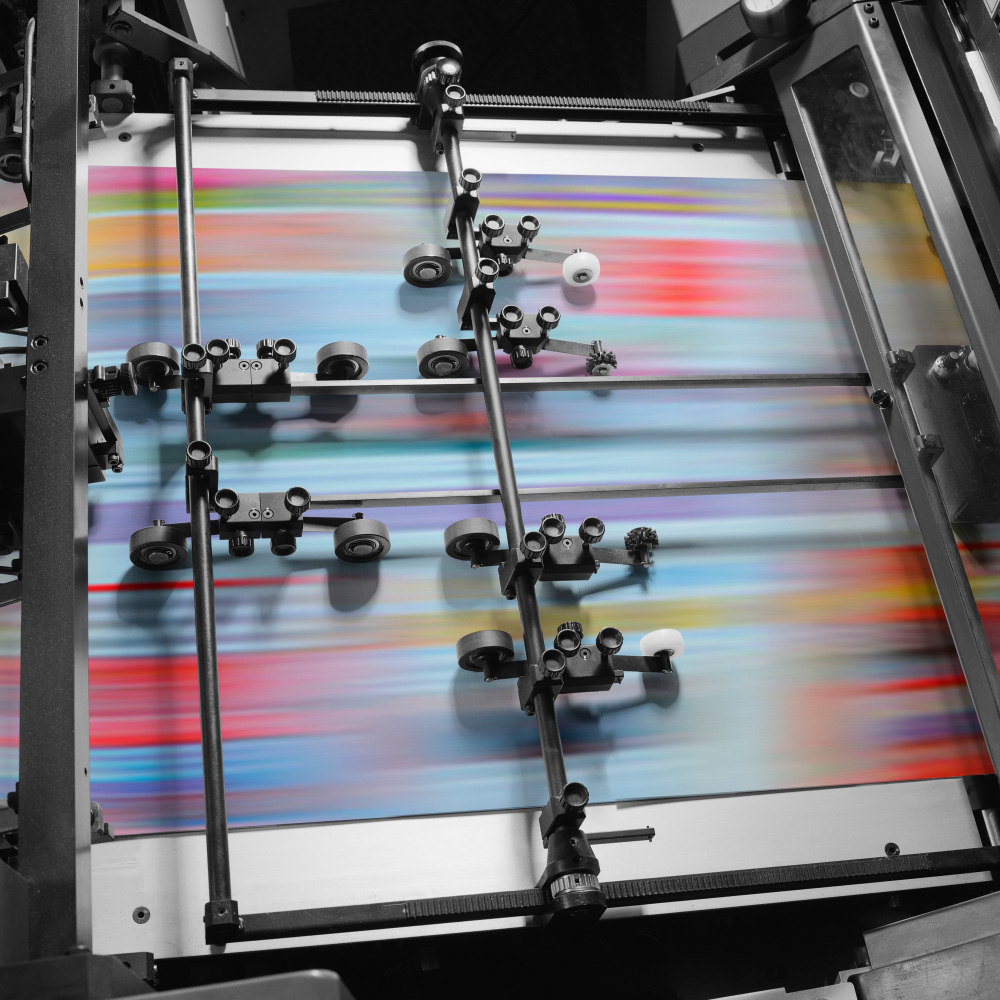
Digital Printing Machine is a type of printing machine used to transfer digital data prepared in a computer environment directly onto the printing surface. Unlike traditional printing methods, digital printing does not use physical printing plates and performs the printing process directly through digital files. This method is particularly popular for short runs, customized prints, and fast production requirements.
Key Features of the Digital Printing Machine:
- Direct Digital Data Printing:
- Digital printing works by transmitting the required printing data directly from the computer to the printing machine. Unlike traditional methods, there is no need to prepare plates or molds.
- Flexibility and Speed:
- Digital printing machines allow the use of different content in each print; that is, every page or print job can be customized. This feature is ideal for personalized prints and small series.
- Additionally, digital printing machines can work very quickly and produce high-quality prints in a short time.
- High-Quality Printing:
- Digital printing machines offer photorealistic prints, vivid colors, and high-resolution details. These machines provide excellent results, especially in design, photography, and fine drawings.
- Low Initial Cost:
- Digital printing machines offer a more economical option for low-volume prints, as they do not require additional costs for mold preparation.
- Short-Term Prints and Personalization:
- Digital printing allows the customization of each print; that is, each page can be printed with different information. This is very suitable for individually customized cards, labels, brochures, invitations, etc.
Working Principle of the Digital Printing Machine:
- A digital printing machine works by transmitting the digital data created in a computer environment directly onto the printing surface. There are two main types of digital printing machines:
- Laser Printing: Digital data is written to a photosensitive drum using laser technology, and then ink (toner) is transferred onto this surface.
- Inkjet Printing: Ink is sprayed onto the printing surface. Digital data is transferred to paper or other printing surfaces as ink droplets.
Advantages of the Digital Printing Machine:
- Fast Production: Printing processes are much faster than traditional printing methods. This makes digital printing attractive for urgent jobs and quick deliveries.
- Low-Cost Small-Volume Prints: Digital printing is more economical for low-volume prints, as it does not require plate or mold preparation.
- High Flexibility: Digital printing allows for easy changes in different colors, graphics, and designs within a single print job.
- Personalization: Each print can be customized; for example, each brochure or label can be printed with different information.
- Low Waste Rate: Digital printing machines use only the amount of ink and paper needed, which minimizes waste.
Disadvantages of the Digital Printing Machine:
- High Cost for Large Volume Prints: Digital printing can be more expensive for large volume jobs compared to traditional printing methods.
- Inconsistent Print Quality: The quality of digital printing can sometimes be lower than traditional prints, depending on the type of ink and paper used.
- Limited Material Options: Digital printing machines generally work with a limited selection of paper and materials. Traditional printing methods may be more suitable for special effects or thicker materials.
Applications of the Digital Printing Machine:
- Short-Run Prints: Small quantities of prints, personalized products, and promotional materials.
- Books and Brochures: Customized books, magazines, brochures, and catalogs.
- Labels and Packaging: Customized labels and packaging produced in small series.
- Mail and Invitations: Personalized invitations, greeting cards, and direct mail applications.
- Art Prints and Photographs: High-quality art prints and photo prints.
Conclusion:
Digital printing machines are highly efficient and economical, especially for fast, customized, and small-volume prints. With advancing technology, these machines continue to deliver high-quality prints. However, for large-volume printing jobs, traditional printing methods still offer a cost advantage in some cases.









































